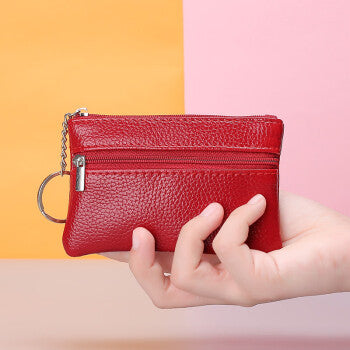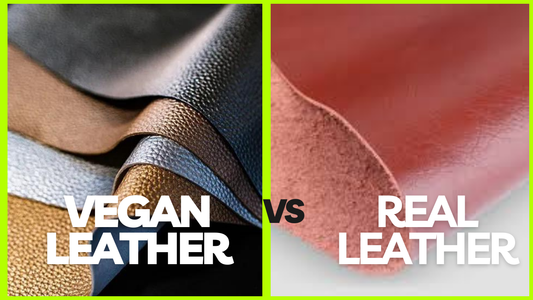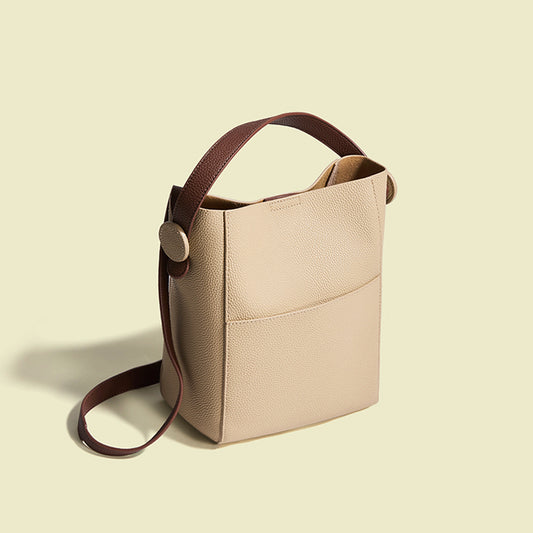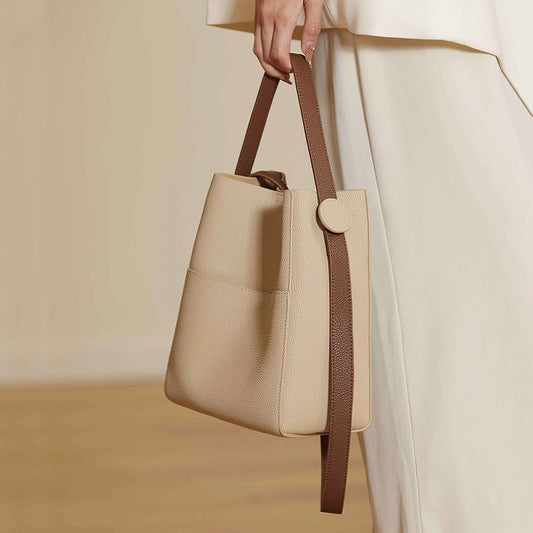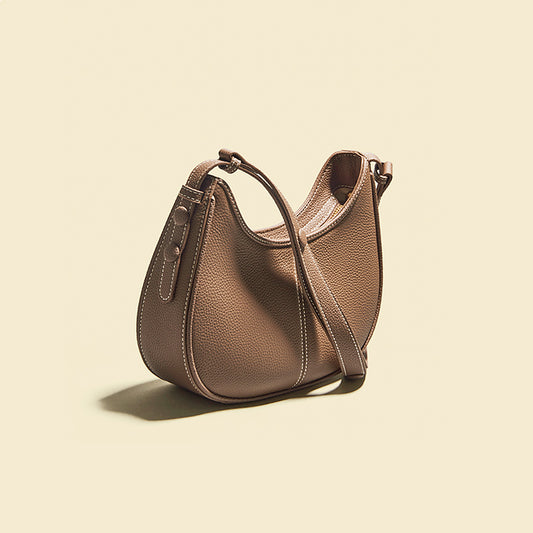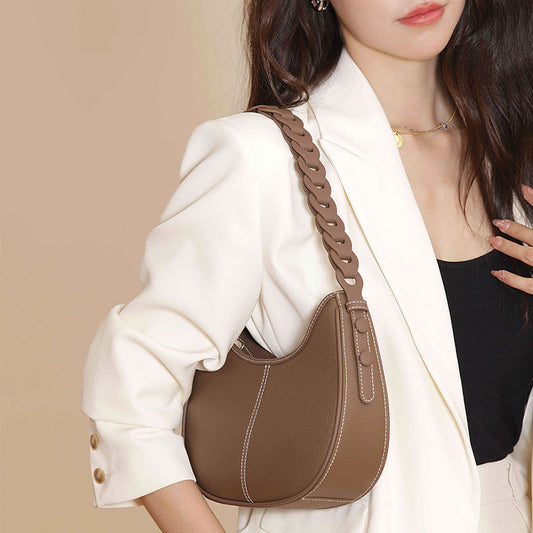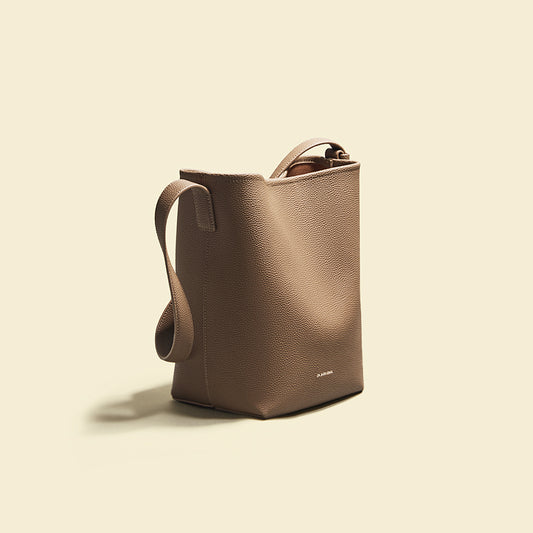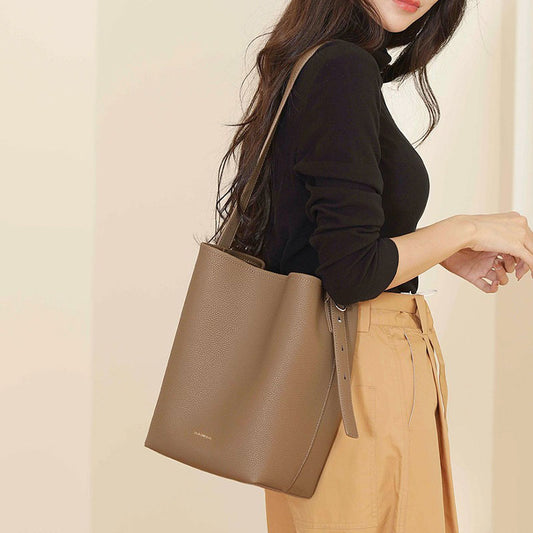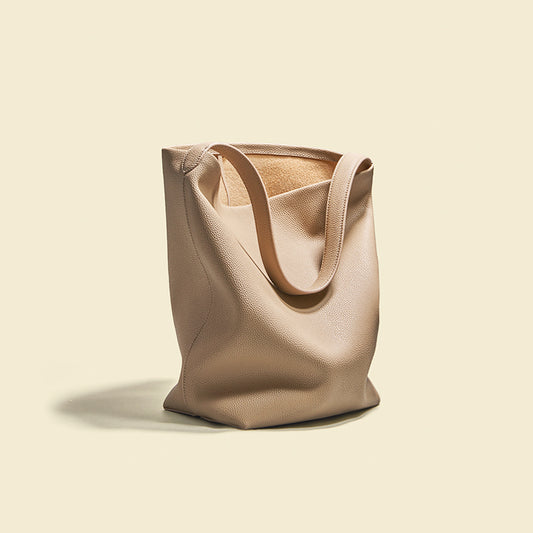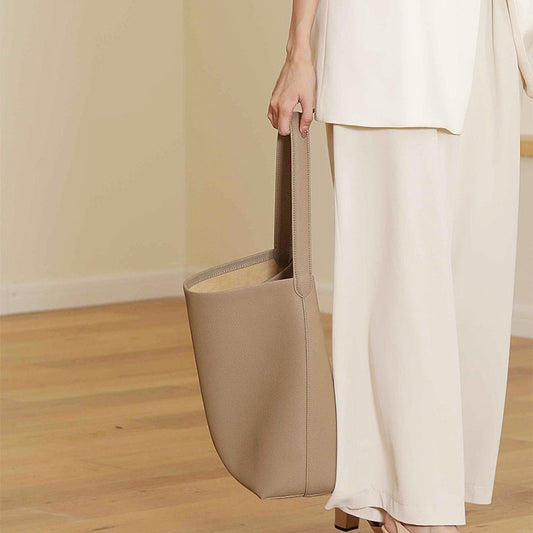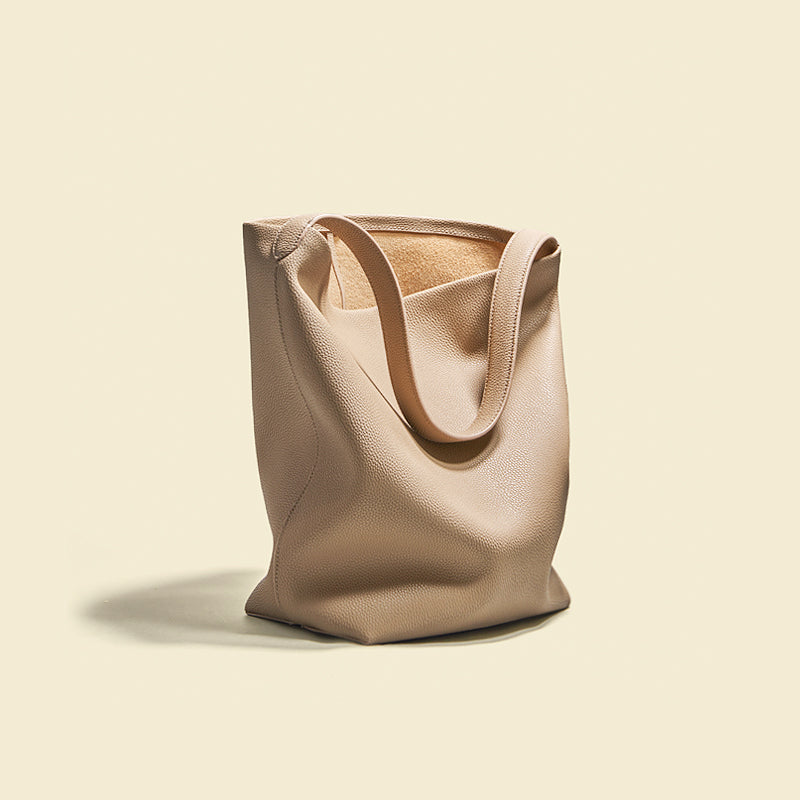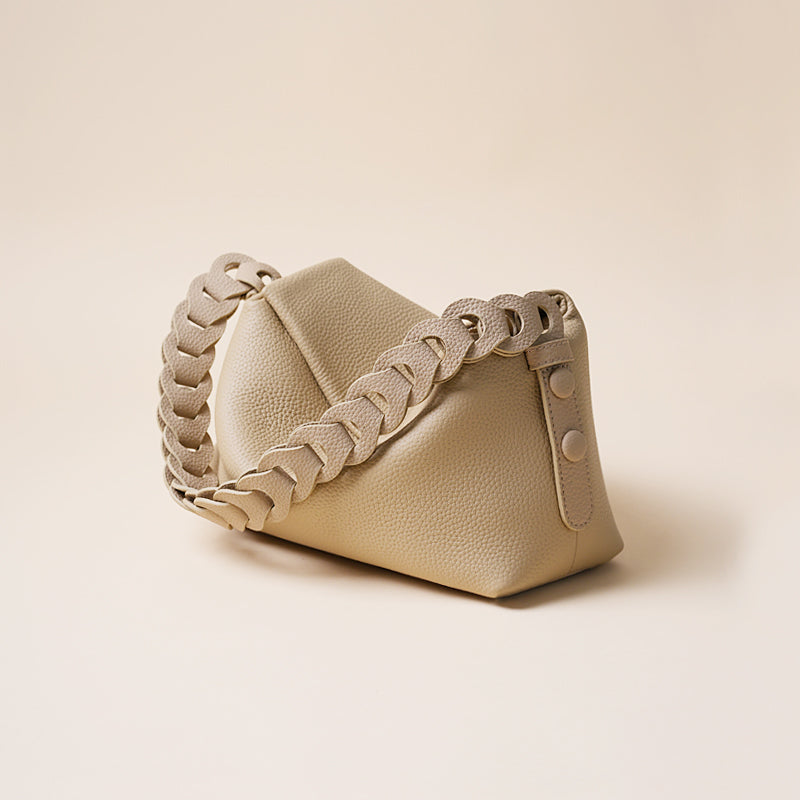Classification and distinction of leather
First, Genuine Leather.
Now there are many types of leather, here are only the following commonly used leather.
1, Cowhide
Because cowhide can achieve a certain thickness and fastness, it is very suitable for leather handbags and belts. Cowhide is characterized by small pores, uniform, and tight distribution, leather surface is rich, leather plate than other leather more solid, feel solid and rich and elastic. Of course, now cowhide is not only used for handbags but also widely used in clothing, and leather shoes.
Cowhide mainly includes yellow cowhide, buffalo skin, yak skin, and Pian cowhide. These kinds of cowhide how to distinguish it? It is not difficult, now I tell you, amateur friends, their characteristics, as long as they master their characteristics, distinguish, it is very fast. Yellow cowhide characteristics: grain meticulous, thick skin layer, high strength, fullness, and elasticity are also better. It is distinguished by exquisite, cozy, and long-lasting made goods. Compared to yellow cowhide, yak skin and Pian cowhide grain surface are worse, but another performance is generally similar; buffalo skin surface rough, fiber coarse, strength low, other performance and yellow cowhide close.
Such the best cowhide when the yellow cowhide, its surface pores are round, straighter than the leather, pores close and uniform, irregular arrangement, as if the sky full of stars. Because its pores are small, smooth, and have meticulous grain, the surface layer is thin, and the mesh layer is very thick, so the physical-mechanical strength is the best. Its dermal papilla layer will be less strong if its density becomes smaller, and it is easy to lose surface in processing.
The board quality is meticulous, the width of the sheet is small, the base plate is thin, the fiber weave is tight, and there are more dark wounds.
Currently, the diversity of leather fashions made from cowhide is not as wide as that from pigskin and sheepskin.
Cow two-layer leather is usually said that the cow King leather, is thick leather with a piece of skin machine cut layer and get, and then sprayed with chemical materials or covered with PVC.PU film processing. Mainly by the thickness to determine the price, the price will be cheaper than the first layer of leather, there is no limit to the width of the sheet, the standard is **** feet (SF), the factory will receive the goods, with adhesive paper paste, test whether the color will be lost. In the case of dark cow King leather, even the best quality will have a slight loss of color, since this is due to the production process, which I'll discuss later. So if my customers place a single dark cow leather bag, I will remind them to pay attention to the color loss and color difference. Used in handbags and apparel is usually cow two-layer suede leather, it is different from pig two-layer is: suede fiber is rougher, but no pores. Cow two-layer finishing leather is mainly used in leather goods, it is processed on cow two-layer to imitate glossy surface or imitation old effect, this kind of leather has some difficulty in identification.
Second, Sheepskin
1, Sheepskin
Sheepskin has small pores, a thin, soft, smooth, and sensitive feel, an uneven division, and a flat, rounded shape. Sheepskin in the leather bag is a relatively upscale raw material of leather.
The classic style of sheepskin has now been broken, and it has been transformed into embossed, washable, printed, and many other types of styles.
2, Goat skin
Because the goat skin's structure is a little bit stronger than that of sheep skin, it has a higher tensile strength. Additionally, because the goat skin's skin layer is thicker than that of sheep skin, it is more resistant to wear. The difference with sheepskin is that goatskin grain surface layer is rougher and smoother than sheepskin, and the feel is slightly worse than sheepskin.
Now goat skin can be made into many different styles of leather, washable imitation leather, this kind of leather has no coating, can be directly put into the water to wash, not to lose color, and the shrinkage rate is very small.
Waxy film leather is rolled on the skin's surface with a coating of oil wax; when this type of leather is subjected to folding or pressure wrinkles, it's common to see some color fading folding lines.
Third,Pigskin
1, Pig glossy surface
Through several tanning procedures, the normal pig glossy surface is processed on the surface of the pigskin. First, the skin's surface is covered with slurry and then colored, an ordinary pig's glossy surface is lustrous, and the pores are arranged very regular, generally three pores as a group in a triangular shape, according to the different regions and different tanning process pig glossy surface is also different in quality, here do not explain, the quality of better pig glossy surface grain is fine, soft to the touch. Pig glossy can now be produced in a wide range of leather types because of ongoing advancements in leather technology.
Imitation old effect, imitation old effect is mainly no luster, some imitation old leather can also have some dark patterns.
The leather's surface can be embossed with patterns like blood bands, stripes, and other designs using the embossing effect.
Although the lychee grain effect might occasionally resemble that of cowhide with coarse grains, there are important differences between the two.
Lychee grain is characterized by a slightly thicker and rougher grain than ordinary glossy leather.
Light coating effect, the surface of this kind of leather is not coated but directly on the different colors, luster than ordinary glossy slightly dark, this kind of leather feel better than ordinary glossy, and leather in the hand with a sagging feeling. The first time I saw many colors of pig fur in the office, I wondered why there were colorful pigs in the world. Only later did I realize that these pig skins were originally colored.
Wash effect, wash effect glossy coating is also thin, and the difference with ordinary glossy is not very big, the difference is softer than ordinary glossy feel. If unfortunately, your bag gets dirty, you can wash the stain directly from the bag with water.
After creating the completed product, you can use sandpaper or other raw materials to wipe on its exterior where you need to give your bag a different, more stylish design. Sandpaper is particularly useful because the color of this sort of leather's surface and base plate differ.
2, Pig head suede
The leather head layer's reverse side is used to treat standard head suede. A layer of directional satin and a short, delicate pile is present on the suede's surface. Sometimes, a few pores are visible.
The first layer of suede-washed leather, which has a better feel than normal suede, is more elastic and has a drapery than normal suede. The first layer of suede distressed leather is leather that is distressed on the front side or the other side. It can be made into printed, laminated, and oiled leather.
The light side of suede is often where printing is done to create various designs. The film is a coating of film that is applied to the suede side of the leather.
It is more trendy and has a bright light, but it has the drawback of being poorly breathable.
A type of raw material blended with three different types of oils and wrapped on the suede side is known as oil film leather.
It can be processed to imitate the old effect of oil film leather, when encountering folding or wrinkling, there will be some color lightening folding marks is normal.
3, Pig two-layer suede
Pig skin has triangle pores, which can be seen through the suede surface of the two-layer suede, which is fundamentally different from the first-layer suede. Compared with the first layer, this layer has much less softness and tensile strength, and its opening is much smaller. Like the first layer of suede, the second layer of suede may be treated into a variety of trim leathers.
Since the cost of the second suede layer is less expensive and does not indicate the quality of the handbags. As a result, we rarely utilize this type of leather for export.
Fourth, Horse leather
Horse leather pores are oval, bigger than cow leather pores, oblique into the leather in the shape of veins, and arranged more regular, leather surface is soft and loose, and the color is dim and bright than cow leather. Horse skin is mostly used for Trim&logo, sand mule skin, and horse skin with the same color (watercolor), when the sun will become red, dark, easy to change color, the longer you put, the color will become will be darker.
Fifth, Mink skin original skin
Generally, mink skin is a very noble leather, generally less used in handbag design, but usually used in clothing. Mink in animal taxonomy belongs to the class Mammalia, carnivorous order, skunk genus of small precious fur animals. In the wild state, there are two kinds of mink: American mink and European mink. The advantages of artificial breeding are that the mink skin is rarely disabled, the mink skin is of average size and thickness, the fur is evenly distributed, and the color difference is small. The fur of male and female minks also differs significantly from one another. Male mink fur is big and thick, and the coats made from it have a sense of weight, while female mink is softer and lighter to wear, with more usage. The female mink has a narrower and smaller body, shorter hair, fine and lighter hair, long and lustrous surface hair, and more expensive finished products. As for the male mink and female mink which is better, generally speaking, the female mink is good, but also needs to choose according to the preferences and design of the buyer.
In addition to black and brown mink, there are also silver gray minks, pearl-colored minks, white minks, and black cross minks (with a stripe on the back fur). The size of each mink skin varies, and the international standard is indicated by "number". 89cm or more is number 30, 83-89cm is number 20, 77-83cm is number 0, 71-77cm is number 1, 65-71cm is number 2, and 59-71cm is number 2. -The higher the c m value is, the bigger the skin is and the higher the price is. Now there are also 00 000 skins, both of which are large.
The quality standard of mink skin is divided into four grades, namely: crown, Saga, grade 1, Saga weak belly, grade 1 weak belly, grade 2, and equal outside (knotted hair type, bite damage type, sick hair type). Some unscrupulous merchants use mink skins of grades below Saga's weak belly and process them to achieve the same effect with the appearance of sage grade for profiteering.
Sixth, Fur
Fur from its use can be divided into two categories: one is made of hair towards the inside, in clothing that is to protect against cold; the other category of hair towards the outside, in clothing that is to decorate (also known as turning fur clothing). In handbag making, it is generally decided whether the fur is facing in or out according to the wishes of the customer or designer.
1,Fox fur
Silver fox fur is characterized by longer fur, usually 7-9CM; the fur needles are uneven in length and coarser than another fox fur, and the fur surface is lustrous. Its original color is gray and black.
Blue fox hair is fine and flush, the hair surface is shiny, the length is shorter than silver fox hair, generally has 5-6CM, the original color of the blue fox is white, used in handbags or clothing generally all dyed.
Red fox hair has traits comparable to those of a blue fox, although it is somewhat longer. Its complete color is red and gray, and it is used for purses or clothes without being dyed.
2, Goat fur
The wool of goat fur is thin and not easy to lose, the wool needle is coarse and the direction is not completely smooth, the front side of goat fur is all leather side, it can be made into suede, spray flower, print, and roll into different effect patterns. Goat fur can be dyed into different colors as needed.
3, Rabbit fur
White fur rabbit
White hair rabbit fur has little down and can be dyed in various colors.
Straw yellow rabbit
Straw yellow rabbit fur has slightly longer needles and is generally used in its original color on clothing.
Otter fur is soft and fine, smooth and delicate, and less likely to shed than another rabbit fur, and otter fur is one of the best among rabbit fur.
Mink fur
Mink fur has better luster than any other fur, and it is especially smooth to touch by hand, and it is less likely to shed.
There are so many kinds of leather, how should I distinguish them?
Different kinds of genuine leather have similarities in appearance and inner structure, such as horse skin and cowhide, yellow cowhide and yak skin, donkey skin and sheepskin, kangaroo skin, and calfskin, etc. Since the development of leather processing technology, leather after trimming decoration and imitation embossing can make its face, the original characteristics are covered, and then after cutting division and delicate sewing, it is almost impossible to distinguish which type of leather it is is. As a result, the leather behind the counterfeit goods will be able to take advantage of this unique opportunity. In pursuit of profits, very individual manufacturers use different leather appearance similarities, in the production of theft or use with the approach, such as horse skin charge cowhide, to yak skin charge yellow cowhide, to donkey skin charge sheepskin ....... In the merchant, also common leather products hanging on the "genuine leather" or "cowhide" logo, individual sales staff to promote their goods, do not do a detailed introduction, leading to customer misselection mis-purchase. Leather is almost a household name, everyone knows, but the lack of relevant expertise is indeed a large number of people. To be more understandable, in the following I introduce several commonly used methods, the former than the latter quality is better: 1.
1 cowhide and horse skin comparison: cowhide surface pores are round, straighter than the leather, pores close and uniform, irregular arrangement, as if full of stars; and horse leather pores are oval, larger than cowhide pores, oblique into the leather in the shape of veins, arranged more regular, leather surface soft and loose, dim and bright color than cowhide.
2. Yellow cowhide and yak skin comparison: yellow cowhide has more proportional fine pores, and yak skin has thicker and sparse pores.
3, sheepskin and donkey skin comparison: sheepskin has fish scale pores, and feels better than donkey skin. In recent years, as people's knowledge of the medicinal properties of donkey skin grows, donkey skin is rarely used on handbags. Maybe many people can't believe it, but this donkey skin is not only edible but also has a high nutritional value!
4. Cowhide and pigskin comparison: cowhide pores are fine and dense, irregular arrangement, smooth leather; and pigskin pores are pincushion triangular arrangement, loose leather.
That is, the same kind of genuine leather, there are many different levels of genuine leather, so how should we distinguish it?
The quality can be divided into A, B, and C grades, where the quality A grade is the best, B grade is slightly worse, and C grade is the worst.
1, first, with the eyes: leather pores are small, not rough, and there is no scar, broken lines, or color uniformity, this is the A grade.
2, with the hands to touch: such as cattle King leather, feel soft, sanding surface even comfortable, this is the A grade; if it is lambskin, the grain of the leather surface to be meticulous and smooth, this is the A grade; if the cowhide, the best is the first layer of cowhide, grain meticulous, richness and elasticity is better, this is the A grade.
Real leather and imitation leather artificial leather (that is, human leather glue, that is, PVC or PU, later I will also elaborate on the difference between the two), and how should we distinguish them?
1. allow to burn, burn the most direct; from the real leather and artificial leather back tear off a little fiber, after ignition, where the pungent smell, knotted into lumps is artificial leather; where the smell of hair, not knotted hard lumps is the real leather.
2. press leather by hand, A. leather has natural wrinkles, artificial leather wrinkles are not natural; B. leather carefully looks at the pores, and the surface texture is not regular, artificial leather has no real pores, the texture is relatively neat; C. leather feels soft and elastic, artificial leather feel hard, not much elasticity that is to touch the surface of the leather with hands, such as smooth, soft, plump, elastic feeling is real leather; and General synthetic leather surface sorry astringent, rigid, poor softness.
3. Use your nose to detect the difference between real and fake leather: real leather has a distinct, unpleasant plastic odor, whereas fake leather does not.
4. Compare different pieces of leather, a leather product, such as leather bags, leather clothes, or shoes, rarely is the whole leather made, so you can look at different small pieces of leather, leather every small piece of the same texture is very unlikely, artificial leather every piece of the same texture;
5. Look at the leather's backside; although fake leather typically has chemical fibers or patterns, real leather merely has pores
6. Look at the luster, leather luster is soft, and artificial leather luster is brighter.
Look at the price, the price of genuine leather and artificial leather price difference is very big, if the price of genuine leather products is very low, be very careful to carefully distinguish it.
How to use and maintain leather bags?
It is not easy to have your leather bag, I will always be very careful to maintain it, so it will be a long time together!
1, Because the main component of cowhide, sheepskin, and pigskin is protein, so are easy to moisture, mold, and insects. For this reason, in the use of leather bags, to avoid contact with oil, acid and alkaline, and other substances. Both leather jackets and leather bags should be submitted to specialized leather care shops regularly for complete cleaning and sanitization. With the use of professional equipment and technology in the cleaning process, adding mold, and sterilization of special chemicals will be a variety of germs, and mold completely removed, fundamentally avoiding the generation of mold phenomenon. Comprehensive cleaning and then properly storing, which is to maintain its original appearance, to extend the wearing life has an important role to play.
2, the leather package is best to use often, and often wipe with a fine velvet cloth. Use a soft, dry cloth to remove water stains or mildew if there is rain, moisture, or both. However, avoid using gasoline and water to clean leather since the latter can cause oil to evaporate and cause the leather to dry up and crack. If your bag hasn't been treated to make it waterproof, wipe it dry with a soft cloth after it's been wet to avoid leaving stains or watermarks that will cause the surface to wrinkle. You should take extra care if you use it in the wet.
3. When the leather bag is wrinkled, use an iron to iron, and set the temperature between 60-70. Ironing with a thin cotton cloth as a lining ironing cloth, at the same time to keep moving the iron.
4. In fact, to the leather varnish is not difficult, as long as the cloth that has been dipped in some varnish in the leather coat is gently coated rub once or twice, generally every two or three years, it is enough to keep the leather soft and luster, and can extend its service life.
5. leather bags such as tear or breakage, should be timely repaired. If the fracture is minor, you can glue it together by dabbing some egg white on it.
6. leather bag when not in use is best to hang up; of course, flat can also be, but to put the surface, lest it will be other things deflated and wrinkled, affecting the beauty.
7. leather bags in the collection before drying, can not be exposed to the sun, hanging in a dry place in the shade forgive ventilation can be. Before collecting, the leather surface can be treated with a layer of milk or glycerin to make the leather bag a long time to preserve the color attractive and so that it can be stored for a long time without discoloring. Avoid the sun, fire, washing, sharp objects, and chemical solvent contact.
8. Do not use water for sanded leather, should be cleaned and cared for with a raw rubber wipe and special supplies, should not use shoe polish.
9, All metal zippers and attachments should be protected because the oxidation of hardware is caused by moisture and a climate with a lot of salt. Second, the human leather glue (also called artificial leather, PVC) and PU, now due to the rapid development of industrial technology, many times manufacture of human leather glue are soft, flexible, and widely used in the handbag industry.
What is called genuine leather, with leather, PU, and PVC fabrics? And what is the distinction method?
Genuine leather -
In the market for leather goods, the term "genuine leather" is frequently used to distinguish between synthetic and natural leather among customers, genuine leather also has a non-fake meaning it is mainly processed from the skin of animals genuine leather is a wide variety of species, variety, different structures, different quality, the price also varies greatly, therefore, genuine leather is both a generic term for all-natural leather, but also a commodity market ambiguous label.
According to the physiological point of view, any animal skin has a hair epidermis and a dermis part because the dermis contains small fiber bundles in a network, so all have considerable strength and breathability
The epidermis is located under the hair, immediately above the dermis, and consists of different shapes of epidermal cell arrangement. more than 90% of the rawhide.
Matching skin -
Some skins are synthesized from scraps of leather, which contain more than 30% of leather, we call this kind of leather.
Artificial leather -
Artificial leather is constructed of PVC, plasticizer, and other additives that are calendered onto fabric. It has the advantages of being affordable, colorful, and pattern-rich, but the drawback is that it is susceptible to easily brittle and hardening.
PU-
PU is a type of artificial synthetic material that resembles leather and is stronger and more durable than synthetic leather.
PU synthetic leather is used to replace PVC artificial leather. Its price is higher than PVC artificial leather due to the chemical structure, but it is closer to the leather fabric and doesn't use plasticizers to achieve the soft nature, so it won't become hard and brittle. At the same time, it has the advantages of rich colors and patterns and is less expensive than leather fabric, so consumers are happy to use it.
The difference between real leather and plasticized leather (PU).
Leather fabric and PVC artificial leather PU synthetic leather with two methods to distinguish: one is to use the back of the fabric to distinguish, the method is PVC artificial leather PU synthetic leather is generally the back of the cloth base (or knitted cloth base) can be seen with the eye; The second way to tell the difference is to burn a little piece of cloth in the fire; leather fabric won't melt whereas PVC fake leather and PU synthetic leather would.
What separates PU from fake leather:
By soaking a small piece of fabric in gasoline for 30 minutes and then removing it, it is possible to tell the difference between PVC artificial leather and PU synthetic leather. If the fabric was made of PVC artificial leather, it would become hard and brittle; if it were made of PU synthetic leather, it would not.

